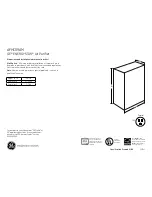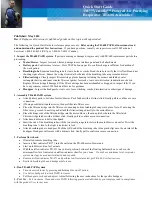
-
51
-
(iii) Flux
1) Reasons for the use of flux
• By removing the oxide film and any foreign matter on the metal surface, it assists the flow of brazing filler.
• In the brazing process, it prevents the metal surface from being oxidized.
• By reducing the brazing filler’s surface tension, the brazing filler adheres better to the treated metal.
2) Properties required for flux
• Temperature at which flux is active coincides with the brazing temperature.
• Due to a wide effective temperature range, flux is hard to carbonize.
• It is easy to remove slag after brazing.
• The corrosive action to the treated metal and brazing filler is negligible.
• Excels in coating performance and is harmless to the human body.
As the flux works in a complicated manner as described above, it is necessary to choose an adequate type of flux according to
the type and shape of treated metal, type of brazing filler and brazing method, etc.
3) Types of flux
• Incorruptible flux
Generally, it is a compound of borax and boric acid.
Effective in cases where the brazing temperature is higher than 800
°
C.
• Activated flux
Most of fluxes generally used for silver brazing fall under this type.
It features an increased oxide film removing capability due to the addition of compounds such as potassium fluoride, potas-
sium chloride and sodium fluoride, to the borax-boric acid compound.
* Cautions:
1
Remove the flux after brazing.
2
When chlorine contained in the flux stays within the pipe, the lubricating oil deteriorates. So, use a flux which does not
contain chlorine.
3
When adding water to the flux, use water which does not contain chlorine (e.g. distilled water or ion-exchange water).
(iv) Brazing
As brazing requires sophisticated techniques and experiences, it must be performed by a qualified person.
In order to prevent the oxide film from occurring in the pipe interior during brazing, it is effective to proceed with brazing while
letting dry nitrogen gas (N
2
) flow.
<Brazing method for preventing oxidation>
1) Attach a reducing valve to the nitrogen gas cylinder
2) Use a copper pipe to direct the nitrogen gas into the piping, and attach a flowmeter to the nitrogen gas cylinder.
3) Apply a seal onto the clearance between the piping and inserted pipe for the nitrogen gas in order to prevent the nitrogen gas
from flowing backward.
4) When the nitrogen gas is flowing, be sure to keep the piping end open.
5) Adjust the flow rate of nitrogen gas so that it is lower than 0.05m
3
/h, or 0.02MPa (0.2kgf/cm
2
) by means of the reducing valve.
6) After taking the steps above, keep the nitrogen gas flowing until the piping cools down to a certain extent (i.e. temperature at
which pipes are touchable with finger).
7) Completely remove the flux after brazing.
Summary of Contents for SRK10CES
Page 2: ...TECHNICAL MANUAL...
Page 204: ...202 MEMO...
Page 213: ...211...
Page 227: ...225...
Page 233: ...231...
Page 236: ...CRBE0226 1 3 4 2 5 6 7 8 9 10 11 12 13 PANEL FAN ASSY 234...
Page 244: ...CRBE0228 9 15 7 8 1 2 4 5 6 12 13 14 10 11 3 PANEL FAN ASSY 242...
Page 248: ...CRBE0227 11 15 16 1 2 3 5 6 7 8 9 12 13 14 4 10 PANEL FAN ASSY 246...
Page 252: ...CRBE0221 12 16 17 1 2 3 5 6 7 8 9 10 13 16 14 15 4 11 PANEL FAN ASSY 250...
Page 256: ...05 0 CRBE0224 2 1 5 16 3 9 11 12 4 7 8 6 6 17 17 10 13 15 14 PANEL FAN ASSY 254...
Page 260: ...2005 ROOM AIR CONDITIONING TECHNICAL HANDBOOK...
















































